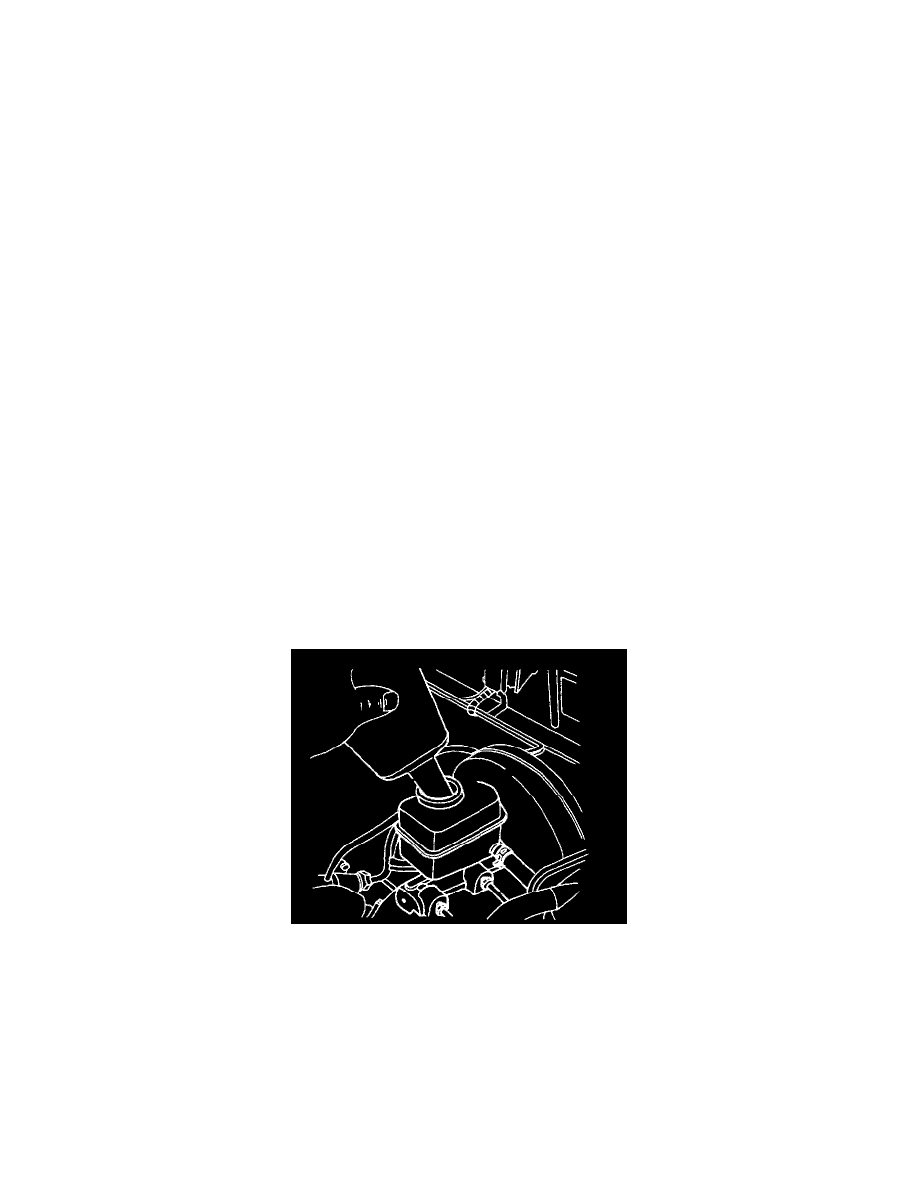Nubira SX Hatchback L4-2.0L DOHC D-TEC MFI (1999)

Brake Bleeding: Service and Repair
BLEEDING SYSTEM
Tools Required
Scan Tool
NOTICE: Prior to bleeding the brakes, the front and rear displacement cylinder pistons must be returned to the top-most (home) position. Using a
scan tool, select the motor rehome function. You cannot perform the motor rehome function if current diagnostic trouble codes (DTCs) are present. If
DTCs are present, you must repair the vehicle and clear the DTCs.
MOTOR REHOME FUNCTION
Tools Required
Scan Tool
The motor rehome function initiates from the scan tool main ABS VI screen. The motor rehome function should always be used prior to bleeding the
brake system to eliminate any trapped air within the hydraulic modulator cylinders. It accomplishes this by returning the hydraulic modulator pistons
to their home positions and forcing any trapped air toward the bleeder valves where it can easily be bled out.
If you do not have a scan tool available to command a motor rehome, follow the procedure below:
1. Raise and suitably support the front end of the vehicle so that the drive wheels are off the ground.
2. Start the engine, engage the transaxle, and run the vehicle above 5 km/h (3 mph) for at least 10 seconds.
3. Observe the ABS indicator. Make sure that the indicator goes out after approximately 3 seconds.
-
If the ABS indicator remains illuminated, use a scan tool to diagnose the malfunction.
-
If the ABS indicator goes out and stays off, stop the engine and repeat steps 2 and 3 one more time.
CAUTION: Brake fluid may irritate eyes and skin. In case of contact, take the following actions:
-
Eye contact - rinse thoroughly with water.
-
Skin contact - wash with soap and water.
-
Ingestion - consult a physician immediately.
Important: In the following procedure, use a suitable container and/or shop cloths to catch brake fluid and prevent it from contacting any painted
surfaces, wiring, cables, or electrical connectors.
4. Clean the master cylinder reservoir and the surrounding area.
5. Remove the master cylinder reservoir cap.
NOTICE: Do not use fluid from an open container that may be contaminated with water.
6. Inspect the brake fluid level. Add clean DOT 3, or equivalent, hydraulic brake fluid, if needed.
7. Install the master cylinder reservoir cap.
8. Bleed the hydraulic modulator:
8.1 Attach a clear plastic bleeder hose to the right side bleeder valve on the hydraulic modulator. Submerge the other end of the bleeder hose in a
clean container partially filled with brake fluid.
